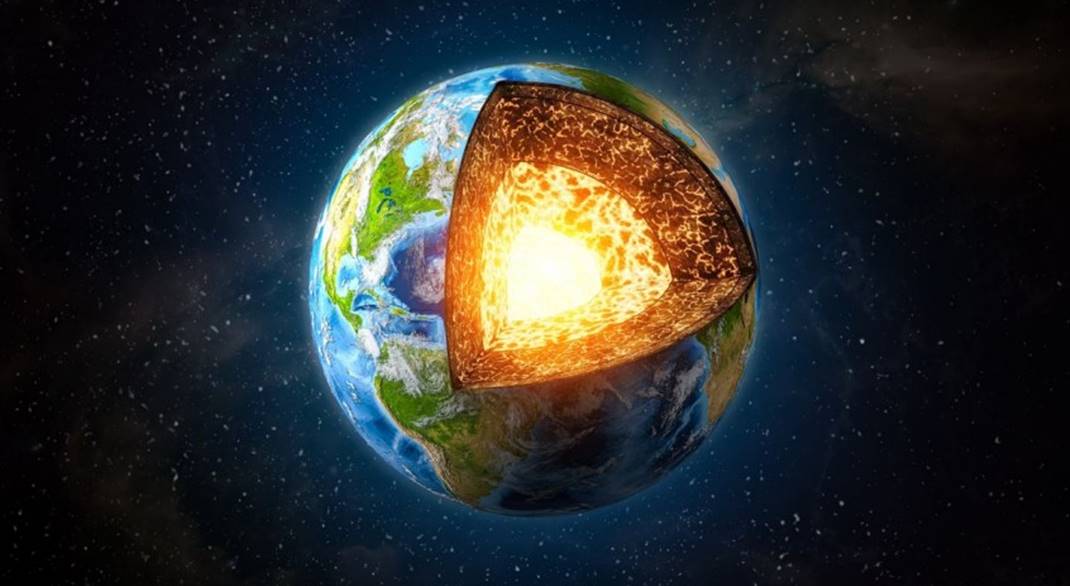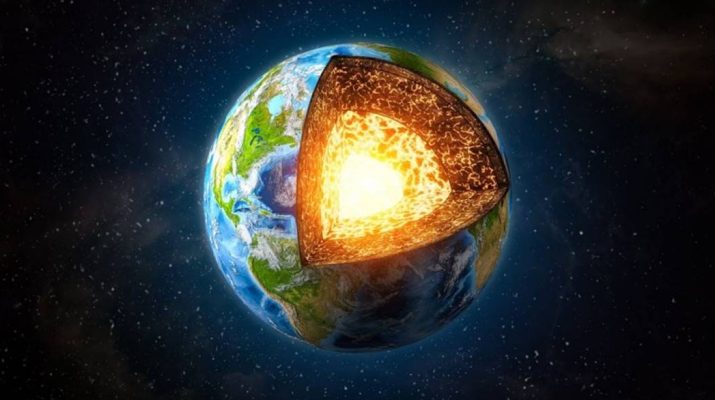Dr. Dan Shim, of Arizona State University: Water from the Earth’s surface is creating a peculiar layer around the core

Within the Earth, there is a thin layer just around the molten metal of the outer core. Its origin has been uncertain for decades, but researchers now believe that the cause of it is to be found right here: It’s the water on the surface that caused that differentiation to take place in the first place. This is difficult to explain by assuming the concentration of a single element dropping there, but it could be explained if a widespread chemical reaction is taking place.
The water is not dripping for thousands of kilometers down a plug hole. It is being carried down by descending tectonic plates and eventually reaches the core after a journey of 2,900 kilometers (1,800 miles). The process is slow, but over billions of years, water from the surface has altered the edge between the bottom of the mantle and the top of the core.
The hydrogen-rich silicate-depleted layer is about a few hundred kilometers thick, basically filmlike given that the core is 6,970 kilometers (4,330 miles) across. The water alteration scenario has this modified layer of liquid-metal end up in reactions that create silica crystals that move into the mantle. It also expects the layer to be less dense with lower seismic velocity, something that has been measured by geologists.
“For years, it has been believed that material exchange between Earth’s core and mantle is small. Yet, our recent high-pressure experiments reveal a different story. We found that when water reaches the core-mantle boundary, it reacts with silicon in the core, forming silica,” co-author Dr. Dan Shim, of Arizona State University, said in a statement.
“This discovery, along with our previous observation of diamonds forming from water reacting with carbon in iron liquid under extreme pressure, points to a far more dynamic core-mantle interaction, suggesting substantial material exchange.”
There is much that we don’t know about the deep interior of our planet. More precise seismic data collected from earthquakes big and small, as well as better simulations, have revealed new details of the interior of our planet.
Only recently, researchers have found evidence that two regions around the core were left over from the planetary collision that formed the Moon.
A paper describing this scenario is published in the journal Nature Geoscience.
Napomena o autorskim pravima: Dozvoljeno preuzimanje sadržaja isključivo uz navođenje linka prema stranici našeg portala sa koje je sadržaj preuzet. Stavovi izraženi u ovom tekstu autorovi su i ne odražavaju nužno uredničku politiku The Balkantimes Press.
Copyright Notice: It is allowed to download the content only by providing a link to the page of our portal from which the content was downloaded. The views expressed in this text are those of the authors and do not necessarily reflect the editorial policies of The Balkantimes Press.

